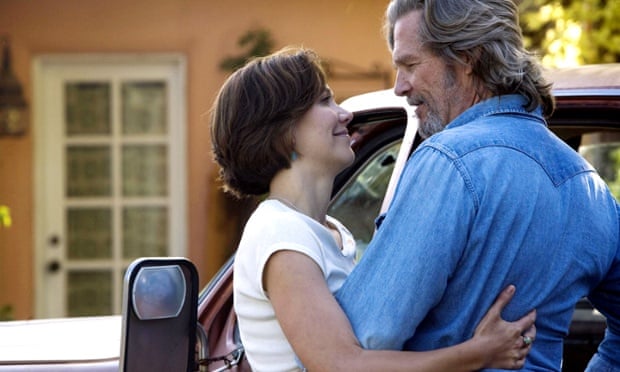Female leads are on average four and a half years younger than their male counterparts in Hollywood movies, and the age gap is only slightly smaller on films directed by women, according to new research.
British film producer and writer Stephen Follows studied 422 romantic films that made more than $1m at the box office in the wake of Maggie Gyllenhaal’s comments last week about her experiences in Hollywood. The Dark Knight actor revealed she was turned down for a role opposite a 55-year-old man because, at 37, she was considered “too old” by casting directors.
Follows, who studied films made between 1984 and 2014, did find that at no point in that period was the average annual age of female leads higher than the average age of their male counterparts. But the 4.5 year average gap is only slightly higher than the statistical average gap of between 2.4 and 2.8 years separating male and female partners in the US, according to 2010 figures.
“Movies are a widespread, popular and loud part of our culture,” said Follows. “The types of pairings that are shown on screen have an effect on what we think of as an ‘ideal’ relationship. This is doubly relevant when we are talking about romantic comedies and dramas.

“It has been my experience that most people expected the age gap to be larger. Possibly because of the veneration of youth in celebrity culture and recent stories about female lead roles going to ever-younger actresses. These figures show that it is indeed happening, and has been for decades, but that the effect may be less than has been feared by some commentators.”
Follows also reported, however, that some A-list actors such as Robert Redford, Dudley Moore and Richard Gere partnered regularly with much younger female leads. Redford and Moore were on average 20 years and 18 years older than their female co-stars.
Meanwhile, Julia Roberts, Debra Winger and Winona Ryder regularly starred alongside much older men during the 30-year period. But Goldie Hawn (on average eight months older) and Sandra Bullock (a year and four months older) flew the flag for female leads who often appeared alongside younger men.
The age gap has generally been coming down over time. In 1984, it was around 10 years, on average, but by 2014 it had settled around seven years. The closest years by age gap were 1988 and 2009, when the men were just 0.6 years and 0.8 years older.
The data also suggested that women directed only 12% of romantic dramas and comedies between 1984 and 2014.
“There are things that are really disappointing about being an actress in Hollywood that surprise me all the time,” said Gyllenhaal last month, in comments which made headlines around the world. “I’m 37 and I was told recently I was too old to play the lover of a man who was 55. It was astonishing to me. It made me feel bad, and then it made feel angry, and then it made me laugh.”

In July last year, Follows published damning figures suggesting more than three-quarters of the crew involved in making 2,000 of the biggest grossing movies over the past 20 years were men, while only 22% were women. His report looked at film industry workers working on the 100 biggest box-office blockbusters each year since 1994.









